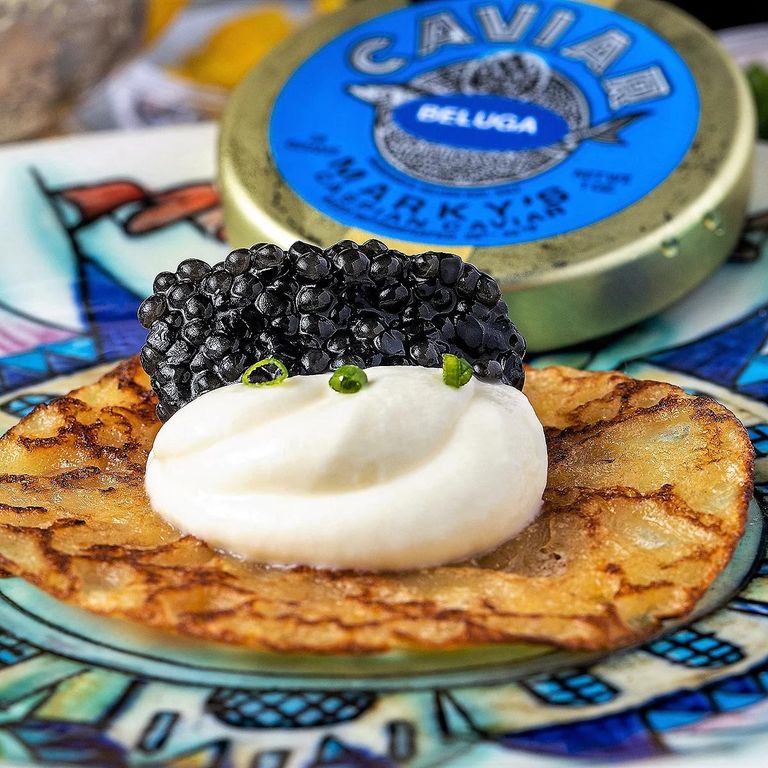Secrets of Succulent Pork Belly for Home Cooks and Chefs
Category : Food Stories, Party Ideas, Recipes, Press Room |
Posted : Oct 14, 2024

Ah, pork belly—the cut that promises a blend of luxurious flavors and textures, captivating the hearts and palates of foodies around the globe. Whether you’re a home cook yearning for culinary adventure or a seasoned professional seeking to perfect your pork belly prowess, this guide is your gateway to mastering this decadent dish. Join us as we explore the art and science behind cooking pork belly to perfection, with techniques and recipes that promise tender, flavorful results.
The Allure of Pork Belly
Pork belly is much more than just a cut of meat—it's a culinary canvas, offering endless possibilities for flavor and texture. Known for its rich layers of fat and meat, pork belly can be transformed into a succulent masterpiece with the right techniques. This versatility makes it a favorite among chefs and home cooks alike, eager to experiment with different cooking methods and cultural influences.
Cooking pork belly isn't merely a task; it's an experience. From the sizzle of searing fat to the aromatic dance of spices in a slow-cooked braise, each step in the process is a sensory delight. Yet, creating the perfect pork belly dish requires more than just enthusiasm—it demands knowledge and skill. Understanding the intricacies of this cut will elevate your cooking game, impressing everyone at the dining table.
Are you ready to unlock the secrets of cooking pork belly like a pro? This guide will walk you through essential techniques, offer tips for achieving that perfect balance of fat and tenderness, and provide recipes inspired by global cuisines. Whether you're hosting a dinner party or simply indulging in a weekend cooking project, the following sections will ensure your pork belly dishes are nothing short of spectacular.
Selecting the Perfect Pork Belly
Before you even begin cooking, selecting quality pork belly is crucial. Look for a piece with a good balance of meat and fat, ensuring the fat isn't too thick or thin. The skin should be smooth, and the flesh firm and pink, indicating freshness. For those who value sustainability and quality, sourcing from reputable butchers or farmers is ideal. Marky's Pork Collection offers a selection of premium cuts that uphold the highest standards of quality, making it an excellent choice for discerning cooks.
Remember, the quality of your ingredients sets the foundation for the entire dish. Investing time in selecting the right pork belly will pay dividends in flavor and texture, allowing you to showcase your culinary skills to their fullest potential.
Searing vs. Slow Roasting
When it comes to cooking pork belly, chefs and home cooks often debate the merits of two popular techniques—searing and slow roasting. Each method has its own set of advantages, and understanding when to use them can significantly impact the final dish.
Searing for Flavorful Crispness
Searing pork belly involves cooking it quickly over high heat, creating a caramelized crust that enhances flavor and texture. This method is excellent for locking in juices and achieving a crispy exterior, making it ideal for dishes that benefit from a contrast between crispy skin and tender meat.
To achieve a perfect sear, start by scoring the skin in a crosshatch pattern. This allows the heat to penetrate the fat and helps the skin crisp up. Season the pork belly generously with salt and your choice of herbs or spices, then heat a pan over medium-high heat. Place the pork belly skin-side down, pressing gently to ensure even contact with the pan. Sear until the skin is golden and crisp, approximately 10–15 minutes, then finish cooking in the oven or reduce the heat to cook through.
Slow Roasting for Tenderness
For those seeking melt-in-your-mouth tenderness, slow roasting is the way to go. This method involves cooking the pork belly at a low temperature for an extended period, allowing the fat to render slowly and the meat to become fork-tender.
To slow roast pork belly, begin by scoring the skin and seasoning the meat. Preheat your oven to around 275°F (135°C) and place the pork belly in a roasting pan, skin-side up. Cook for 2–3 hours, basting occasionally with its own juices or a flavorful marinade. For extra crispiness, finish by increasing the oven temperature to 425°F (220°C) for the last 15–20 minutes.
The Importance of Scoring the Skin
Scoring the skin is more than just an aesthetic choice—it's a practical technique that ensures even cooking and a crispy finish. By making shallow cuts in the skin, you allow heat and seasonings to penetrate more effectively, resulting in a well-cooked, flavorful dish.
When scoring, aim for cuts that are about 1/4 inch deep. This depth allows the skin to crisp without cutting into the meat. Use a sharp knife and make parallel cuts across the surface, spacing them about 1/2 inch apart. This method not only enhances the presentation but also contributes to that irresistible crunch.
Marinating and Brining for Enhanced Flavor
Marinating and brining are powerful techniques for infusing pork belly with flavor while ensuring tenderness. A well-prepared marinade or brine can amplify the natural flavors of the meat and contribute to a more enjoyable eating experience.
Marinating Basics
Marinating involves soaking the pork belly in a mixture of liquid, herbs, spices, and acids like vinegar or citrus. This process can take anywhere from a few hours to overnight, depending on the desired intensity of flavor.
A simple yet effective marinade could include soy sauce, garlic, ginger, and honey for an Asian-inspired twist. Alternatively, try a Mediterranean marinade with olive oil, rosemary, and lemon zest. Ensure the pork belly is fully submerged or adequately coated, and refrigerate during marination.
Brining for Moisture
Brining is similar to marinating but focuses more on the meat's juiciness. It's typically done with a solution of water, salt, and sugar, sometimes with added aromatics like bay leaves or peppercorns.
To brine pork belly, dissolve salt and sugar in water, then immerse the meat for 24 hours. Rinse thoroughly before cooking to remove excess salt. Brining can make a noticeable difference in the meat's texture, enhancing its natural succulence.
Braising for Melt-in-Your-Mouth Texture
Braising is a time-honored technique that transforms pork belly into a tender, succulent dish. It involves cooking the meat slowly in a flavorful liquid, allowing it to absorb rich flavors while breaking down tough fibers.
Step-by-Step Braising Process
- Prepare the Pork Belly: Pat the pork belly dry and season with salt and pepper. Sear in a hot pan until browned on all sides, then set aside.
- Create the Braising Liquid: In the same pan, sauté aromatics like onions, garlic, and carrots until softened. Add liquids such as stock, wine, or soy sauce, and bring to a simmer.
- Braise: Return the pork belly to the pan, ensuring it's mostly submerged. Cover and cook in a preheated oven at 325°F (165°C) for 2–3 hours, or until the meat is tender and easily pulls apart with a fork.
Braising not only yields tender meat but also provides a delicious sauce that can be served alongside the dish, adding depth and richness to the final presentation.
Balancing Fat Rendering and Meat Tenderness
Pork belly is renowned for its layers of fat, which contribute to its flavor and moistness. However, achieving the perfect balance between fat rendering and meat tenderness requires careful attention to cooking times and temperatures.
The key is to render the fat slowly, allowing it to melt away without drying out the meat. Techniques like slow roasting or braising excel at this, as they use gentle heat and prolonged cooking to break down fat while preserving the meat's moisture.
For an added touch of luxury, consider finishing the pork belly with a quick sear or broil to crisp up the skin, enhancing both texture and flavor.
Incorporating Pork Belly into Different Cuisines
One of the joys of cooking with pork belly is its versatility across various cuisines. From Asian delicacies to European classics, this cut can adapt to a multitude of flavor profiles and dishes.
Asian Inspirations
In Asian cuisine, pork belly shines in dishes like Chinese braised pork, Korean bossam, and Japanese kakuni. These recipes often feature savory and sweet notes, balanced with spices or fermented ingredients.
European Classics
For a taste of Europe, consider incorporating pork belly into a French cassoulet or Italian porchetta. These dishes highlight the cut's richness, pairing it with beans, herbs, and aromatic vegetables for a comforting meal.
American Favorites
In American cuisine, pork belly is often found in barbecue and Southern dishes. Think slow-cooked pork belly burnt ends or crispy pork belly sliders, perfect for a casual gathering or backyard cookout.
Experimenting with different cuisines can expand your culinary repertoire, showcasing the adaptability of pork belly and delighting your taste buds with new flavor combinations.
Recipes for Pork Belly Perfection

Now that we've explored techniques and cuisines, it's time to put theory into practice with a few mouthwatering recipes. These recipes will guide you through the process, ensuring delicious results every time.
Chinese Braised Pork Belly
An iconic dish, Chinese braised pork belly features tender meat simmered in a savory sauce of soy, sugar, and spices. Serve it over rice with steamed greens for a satisfying meal. This traditional Chinese dish offers a perfect balance of sweet, savory, and fragrant notes, transforming pork belly into a melt-in-your-mouth delight that is sure to impress.
Ingredients
- 2 lbs (900g) pork belly, skin on
- 1/4 cup (60ml) soy sauce
- 2 tablespoons dark soy sauce
- 1/4 cup (50g) brown sugar
- 1/4 cup (60ml) rice wine or Shaoxing wine
- 1 inch (2.5cm) piece of ginger, sliced
- 4 cloves garlic, smashed
- 2-3 star anise
- 1 stick of cinnamon
- 2 cups (500ml) water
- 2 scallions, chopped (for garnish)
Instructions
- Prepare the Pork Belly: Start by cutting the pork belly into 1-inch (2.5cm) cubes. Blanch the meat in boiling water for about 5 minutes to remove impurities. Drain and set aside.
- Make the Braising Sauce: In a large pot, combine the soy sauce, dark soy sauce, brown sugar, rice wine, ginger slices, smashed garlic, star anise, and cinnamon stick. Stir well, and add the 2 cups of water. Bring the mixture to a gentle boil over medium heat.
- Braise the Pork Belly: Add the blanched pork belly to the pot, making sure it's mostly submerged in the sauce. Cover with a lid, reduce the heat to low, and let it simmer for 1.5 to 2 hours. Check occasionally to ensure the sauce isn't reducing too much. If necessary, add a bit more water.
- Finishing Touches: Once the pork is tender and falls apart easily, remove the lid and allow the sauce to reduce slightly for another 15-20 minutes until it thickens. For extra flavor, you can skim off excess oil if desired.
- Serve: Plate the braised pork belly with a drizzle of the rich sauce, garnished with chopped scallions. This dish is best served over steamed rice with steamed vegetables or greens on the side.
This dish embodies the essence of Chinese cuisine—deep flavors and a rich history—making it a delightful centerpiece for any meal. Enjoy the fusion of textures and tastes with each tender bite!
Italian Porchetta
Porchetta is a traditional Italian dish of rolled pork belly seasoned with garlic, rosemary, and fennel. Roast it until crispy, then slice and serve with a side of roasted vegetables or salad. This recipe is perfect for a special occasion or holiday feast, showcasing the decadent flavors of Italy.
Ingredients
- 3 lbs (1.4kg) pork belly, skin on
- 6 cloves garlic, minced
- 2 tablespoons fresh rosemary, chopped
- 2 tablespoons fennel seeds, crushed
- 1 tablespoon coarse salt
- Freshly ground black pepper to taste
- Olive oil for drizzling
Instructions
- Prepare the Pork Belly: Begin by scoring the skin of the pork belly with a sharp knife in a cross-hatch pattern. In a small bowl, combine the minced garlic, chopped rosemary, crushed fennel seeds, salt, and black pepper. Rub this mixture all over the meat-side of the pork belly.
- Roll it Up: Roll up the pork belly with the seasoned side facing inward, securing with kitchen twine every few inches to hold its shape.
- Roast and Serve: Preheat your oven to 350°F (175°C). Drizzle olive oil over the outside of the rolled pork belly. Place on a roasting rack in a roasting pan, and roast for about 1 hour per pound (450g) until crispy on the outside and fully cooked through. Let rest for 10 minutes before slicing and serving.
This porchetta is sure to impress guests with its golden crackling and flavorful herb-infused interior. Serve with your favorite sides, or on top of crostini for a decadent appetizer.
Barbecue Pork Belly Burnt Ends
For those craving smoky flavors, barbecue pork belly burnt ends are a must-try. Cooked low and slow, these morsels are glazed with barbecue sauce, offering a sweet and tangy contrast to the rich meat. Serve with your favorite barbecue sides for a memorable meal.
Ingredients
- 3 lbs (1.4kg) pork belly, skin on
- Your choice of dry rub or seasoning mix
- 1 cup (240ml) barbecue sauce of your choice
Instructions
- Prepare the Pork Belly: Begin by scoring the skin side of the pork belly in a cross-hatch pattern. Apply your desired dry rub or seasoning mix to all sides of the meat, pressing it into any crevices and covering evenly.
- Smoke and Glaze: Preheat your smoker to 225°F (107°C). Place the seasoned pork belly on a rack in the smoker and cook for 4-5 hours, or until the internal temperature reaches 190°F (88°C). Baste with your choice of barbecue sauce every hour during the last two hours of cooking.
- Cut and Grill: Once cooked, remove the pork belly from the smoker and let it rest for about 15 minutes. Cut into small bite-size cubes, then place on a preheated grill over medium-high heat. Grill for about 10-15 minutes, turning occasionally, until crispy and caramelized on all sides.
Few dishes can rival the irresistible combination of smoky, sweet, and savory flavors found in these burnt ends. Serve as an appetizer or main course at your next barbecue or gathering, and watch them disappear in no time.
Each recipe showcases the versatility of pork belly, inviting you to explore different cooking methods and flavor profiles, all while honing your culinary skills.
Final Thoughts on Cooking Pork Belly
Mastering the art of cooking pork belly is a rewarding endeavor, one that offers endless opportunities for creativity and indulgence. By understanding and applying the techniques discussed in this guide, you'll elevate your culinary repertoire and delight those fortunate enough to share your table.
Remember, the key to exceptional pork belly lies in the details—from selecting quality ingredients to mastering cooking techniques and exploring diverse cuisines. Whether you're a home cook or professional chef, these insights will empower you to create tender, flavorful dishes that celebrate the richness of this beloved cut of meat.
Explore Further with Marky's Pork Collection
Ready to elevate your pork belly dishes to new heights? Discover the premium selections within Marky's Pork Collection, where quality and flavor come together in every cut. Visit our website for more recipes, tips, and insights into gourmet cooking, and sign up for exclusive deals and updates from the culinary world.
Your culinary adventure awaits—embrace the challenge, savor the experience, and share your creations with those you love. Happy cooking!













